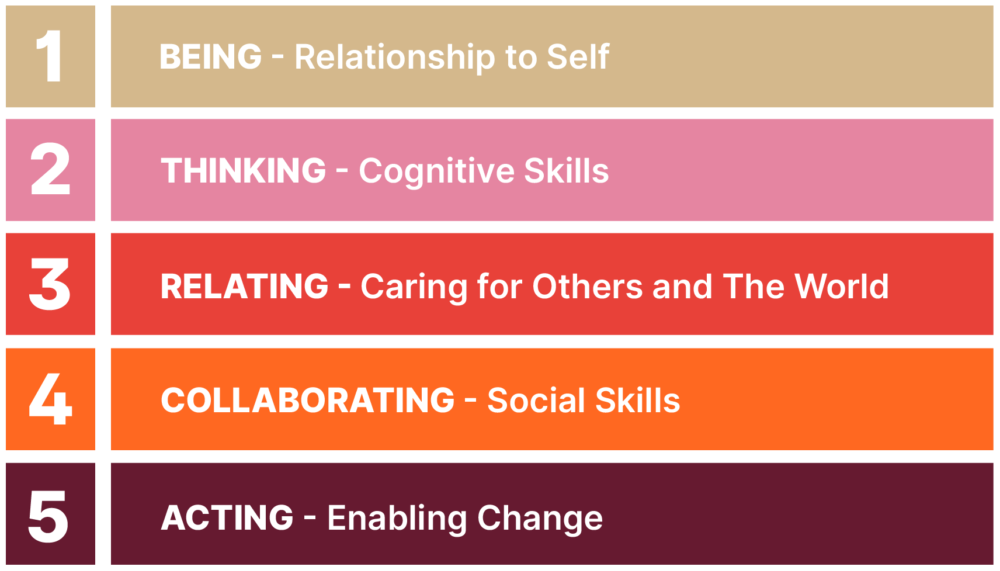Sustainable leadership: future-proof leadership with responsibility

How can economic success and sustainable action be combined in the long term? The answer lies in the concept of sustainable leadership: a management philosophy that specifically integrates ecological, social and economic sustainability into decisions, structures and daily actions. Managers take on more than just management tasks - they act as role models, steer transformations and build bridges between economic performance and social responsibility. Those who manage sustainably not only ensure the success of their own company, but also actively help to shape the future.
What does sustainable leadership mean in concrete terms?
Sustainable leadership stands for a holistic management approach that combines economic goals with responsibility for people and the environment. It is about more than ecological measures or sustainability reports - it is about attitude, behavior and impact. The Green Leadership approach also focuses on ecological responsibility.
Sustainable managers make decisions that not only work today, but will also endure tomorrow. They think in context, act in a value-oriented manner and create structures in which innovation and responsibility can grow together.
Core principles of sustainable leadership
Sustainable leadership begins with a clear attitude and is reflected in daily actions. To turn good intentions into effective change, managers need a stable foundation. The following five principles form the core of sustainable leadership. They help to master complex challenges and at the same time make your own organization fit for the future.
Principle #1: Think long-term - decide today for tomorrow
Sustainable leadership means thinking beyond quarterly figures. Managers develop strategies that will still be in place 20 years from now.
- Focus your decisions consistently on long-term goals instead of prioritizing short-term gains.
- Ask yourself for every important decision: "Does this contribute to a sustainable future?"
- Develop a clear vision together with your team that combines economic, ecological and social sustainability aspects.
- Establish metrics that reflect long-term value creation and not just financial indicators.
Principle #2: Systems thinking - recognize connections, make smarter decisions
As a leader with a focus on sustainability, you understand the complex interactions between business, the environment and society.
- Systematically analyze how your business decisions affect all stakeholders .
- Use tools such as stakeholder mapping or impact analyses to avoid blind spots.
- Promote interdisciplinary thinking in your team and break down silos.
- View your company as part of a larger ecosystem, not as an isolated entity.
Principle #3: Ethics & integrity - living responsibility authentically
Green leadership begins with your personal conviction. Your employees will sense whether you are serious about sustainability or just using it as a marketing tool.
- Set an example of ecological sustainability both privately and professionally. Your behavior has an impact on your credibility.
- Make transparent decisions and communicate openly about challenges.
- Take responsibility for mistakes and show how you learn from them.
- Develop clear ethical guidelines for your team and ensure that they are implemented.
Principle #4: Innovation & adaptability - promoting creative solutions
Climate crisis, digitalization, social change - sustainable solutions can only be found if companies remain adaptive. Managers must encourage creativity, create space for experimentation and actively shape change.
- Encourage your team to critically scrutinize existing processes and develop sustainable alternatives.
- Establish a corporate culture that recognizes mistakes as a learning opportunity and signals that sustainable solutions are desired.
- Use diversity as a driver of innovation - different perspectives lead to better solutions.
- Invest specifically in further training on sustainability topics and new technologies.
Principle #5: Stakeholder engagement - achieving more together
Sustainable transformation can only succeed in dialog with all stakeholders. You actively involve employees, customers and society.
- Create regular opportunities for exchange with internal and external stakeholders.
- Listen actively and integrate different perspectives into your decision-making processes.
- Communicate your sustainability goals and progress transparently to the outside world.
- Develop partnerships with other companies, NGOs or educational institutions.
Shaping sustainability effectively: Fields of action for managers
Sustainable corporate management is not a goal, but an ongoing development process. In order for the combination of leadership and sustainability to succeed, orientation and clear priorities are required. The following topics show how managers can assume responsibility in a targeted manner and actively promote sustainability within the company.
Define ESG goals and make them measurable
No sustainable development without clear goals: ESG (Environmental, Social, Governance) provides an effective framework for managing and transparently communicating progress in sustainability.
What is important:
- Develop concrete, verifiable targets along the ESG dimensions.
- Select suitable key performance indicators (KPIs), for example CO₂ balance sheet, diversity quotas or supply chain risks.
- Integrate ESG targets into your managers' strategic planning and target agreements.
- Use reporting standards such as the GRI (Global Reporting Initiative) or the SDGs (Sustainable Development Goals) for external communication.
Promoting inclusivity & diversity
Diversity is more than a moral imperative - it is a driver of innovation. Teams that bring in different perspectives can develop creative and sustainable solutions. Sustainable leadership therefore also means actively shaping diversity.
How to strengthen diversity in the company:
- Promote fair opportunities regardless of gender, origin, age or lifestyle.
- Use diversity criteria when selecting staff and scrutinize existing structures.
- Create a working environment in which all employees feel heard and valued.
- Establish clear guidelines against discrimination and for respectful cooperation.
Self-leadership as the basis for sustainable leadership
Only those who can lead themselves can lead others credibly and sustainably. Examining one's own values, convictions and behavioral patterns is a central component of sustainable leadership.
Ask yourself these questions regularly:
- What do I stand for, even when it gets uncomfortable?
- What values guide my actions as a manager?
- How do I deal with my own resources? Do I exemplify what I expect from others?
- What effect does my behavior have on others, in the organization and beyond?
Targeted reflection, coaching and working with personality models (e.g. values square, Inner Development Goals) help to sharpen your own understanding of sustainability.
Changing corporate culture sustainably
Sustainability must be part of the culture we live by - and not just a topic on PowerPoint slides. Cultural change succeeds when managers consistently lead the way and make sustainable behavior visible.
This is how you drive cultural change:
- Anchor sustainability in mission statements, rituals and decision-making criteria.
- Reward sustainable action - not just economic results.
- Encourage dialog formats in which employees can contribute their ideas.
- Be consistent: No statements about sustainability without lived reality.
Making sustainability visible: Trade fairs & reporting
Credibility is created through transparency. Those who make progress visible - and also name challenges - create trust among stakeholders and drive their own development forward.
Important instruments for more transparency:
- Sustainability reports according to recognized standards (e.g. SDG mapping)
- Internal dashboards for ESG target tracking
- Open communication about successes and learning areas
- Involvement of employees in data collection and interpretation
Sustainable leadership: these are the challenges that need to be mastered
Managing sustainably means navigating a complex field of tension between expectations, conflicting goals and limited resources.
Complexity of sustainable decisions
One challenge is the complexity of sustainable decisions. Managers have to consider economic, environmental and social factors at the same time - often without a clear solution and with unclear data. This requires not only systemic thinking, but also the courage to remain capable of acting in uncertain times.
High resource requirements of many sustainability initiatives
Added to this is the high resource requirement of many sustainability initiatives. Whether switching to sustainable supply chains, CO₂ reduction or further training, such measures require time, money and human resources. It is important to prioritize with a sense of proportion and formulate viable arguments to stakeholders .
Resistors
Change processes often encounter resistance - be it due to established routines, fears of losing control or doubts about their effectiveness. Successful managers counter these obstacles with stakeholder involvement, dialog and transparency. They make objectives tangible and jointly develop paths to a sustainable future.
The Inner Development Goals: Sustainability begins with the inner attitude
Technological innovations and regulatory requirements alone are not enough to master the complex challenges of sustainable development. What is needed are people, especially managers, who actively shape change with inner strength, foresight and attitude. This is precisely where the Inner Development Goals framework comes in.
The IDGs define five key development areas that are essential for sustainable leadership: Being, Thinking, Relationships, Collaboration and Action. Behind them are 23 specific skills - from mindfulness, empathy and critical thinking to courage and the ability to cooperate. These skills form the foundation for not only knowing the Sustainable Development Goals, but actively implementing them.

Why are IDGs so relevant for managers in particular?
- Holistic approach: The IDGs make it clear that sustainable leadership begins with self-development - not with external strategies.
- Cultural change: Those who strengthen their inner attitude can lead authentically and help shape a sustainable corporate culture.
- Practical relevance: Companies such as Google, IKEA and Ericsson are already using the IDGs in their development programs - with noticeable success.
- Complementary to SDGs: While Sustainable Development Goals set the framework, IDGs aim to strengthen the psychological, adaptive and cultural skills needed to implement the SDGs.
FAQ
What is sustainable leadership?
Sustainable leadership combines economic success with social and ecological responsibility. It is based on five core principles: long-term thinking, system understanding, ethical integrity, innovation and stakeholder engagement. Sustainable leaders make decisions that endure today and tomorrow, act as authentic role models and create structures in which innovation and responsibility grow together.
Why is it worthwhile to actively shape sustainability as a manager?
Because sustainable leadership not only strengthens the trust of employees and customers, but also minimizes risks, increases innovation potential and creates long-term stability. Those who act early gain a real advantage for the future - both socially and economically.
How can I specifically promote sustainability in the company?
Start with a clear mission statement and actively involve relevant stakeholders . Anchor ESG goals in the strategy, promote an open feedback and learning culture - and invest in further training. This will create the basis for real change - driven by conviction rather than a sense of duty.
You might also be interested in










